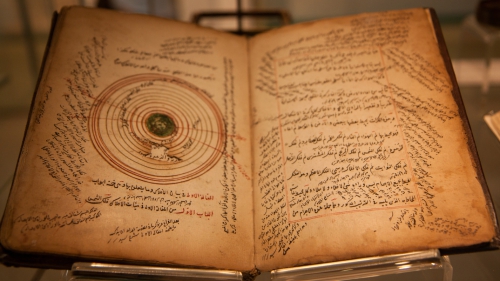The Mongols and the Mamluks

In the thirteenth century still another threat to the Muslim world appeared in the land beyond the Oxus: the Mongols. Led by Genghis Khan, a confederation of nomadic tribes which had already conquered China now attacked the Muslims. In 1220 they took Samarkand and Bukhara. By mid-century they had taken Russia, Central Europe, northern Iran, and the Caucuses, and in 1258, under Hulagu Khan, they invaded Baghdad and put an end to the remnants of the once-glorious 'Abbasid Empire. The ancient systems of irrigation were destroyed and the devastation was so extensive that agricultural recovery, even in the twentieth century, is still incomplete. Because a minor scion of the dynasty took refuge with the Mamluks in Egypt, the 'Abbasid caliphate continued in name into the sixteenth century. In effect, however, it expired with the Mongols and the capture of Baghdad. From Iraq the Mongols pressed forward into Syria and then toward Egypt where, for the first time, they faced adversaries who refused to quail before their vaunted power. These were the Mamluks, soldier-slaves from the Turkish steppe area north of the Black and Caspian Seas with a later infusion of Circassians from the region of the Caucuses Mountains.
The Mamluks had been recruited by the Ayyubids and then, like the Turkish mercenaries of the 'Abbasid caliphs, had usurped power from their enfeebled masters. Unlike their predecessors, however, they were able to maintain their power, and they retained control of Egypt until the Ottoman conquest in 1517. Militarily formidable, they were also the first power to defeat the Mongols in open combat when, in 1260, the Mongols moved against Palestine and Egypt. Alerted by a chain of signal fires stretching from Iraq to Egypt, the Mamluks were able to marshal their forces in time to meet, and crush, the Mongols at 'Ayn Jalut near Nazareth in Palestine.
 Photo: The Mamluks, originally a class of soldier slaves, seized power in Egypt in the thirteenth century and stood fast against the Mongols.
Photo: The Mamluks, originally a class of soldier slaves, seized power in Egypt in the thirteenth century and stood fast against the Mongols.
In the meantime, the Mongols, like so many of the peoples who had come into contact with Islam, had begun to embrace it. At the dawn of the fourteenth century, Ghazan Khan Mahmud officially adopted Islam as the religion of the state, and for a time peace descended on the eastern portion of the Mongol empire. During this period the Mongols built mosques and schools and patronized scholarship of all sorts. But then, in 1380, a new Turko-Mongol confederation was hammered together by another world conqueror: Tamerlane, who claimed descent from Genghis Khan. Under Tamerlane, the Mongol forces swept down on Central Asia, India, Iran, Iraq, and Syria, occupying Aleppo and Damascus and threatening - but not defeating - the Mamluks. Once again, however, the Muslims survived their invaders. Tamerlane died on his way to conquer China, and his empire melted away.
Politically and economically, the Mongol invasions were disastrous. Some regions never fully recovered and the Muslim empire, already weakened by internal pressures, never fully regained its previous power. The Mongol invasions, in fact, were a major cause of the subsequent decline that set in throughout the heartland of the Arab East. In their sweep through the Islamic world the Mongols killed or deported numerous scholars and scientists and destroyed libraries with their irreplaceable works. The result was to wipe out much of the priceless cultural, scientific, and technological legacy that Muslim scholars had been preserving and enlarging for some five hundred years.











